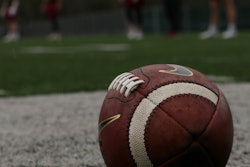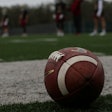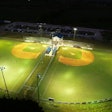Copyright 2017 The Buffalo News
All Rights Reserved
The Buffalo News (New York)
Students and administrators at the Park School of Buffalo always knew their main athletic field had a slope to it. But they never realized how severe it was until the Daemen College men's and women's soccer teams started using the field last fall for games.
The college teams noticed about 75 percent of the scoring in every game was taking place at the same end.
The field on Harlem Road in Snyder, it turns out, is 10 feet lower at the north end than at the south end. That means whichever team is defending the north end of the field is at a clear disadvantage for half the game, because the other team is running downhill with the ball toward that goal, said Bridget Niland, Daemen's athletic director.
"It's a crazy story," Niland said.
Other than the distinct pitch and the uneven scoring that results, Daemen officials say they are happy with the field and with their partnership with the Park School. The college, which had struggled to find a permanent home field for its soccer teams, last year invested in a scoreboard and other amenities at the Park School field.
This week, the Park School plans to begin construction on upgrades to the field that include leveling it out and laying down new turf. Daemen has raised money to pay for the field improvements, in exchange for a long-term agreement to continue using the field rent free.
"It turns out that it's a perfect match," said Christopher Lauricella, Park School's head of school.
Park School has used this piece of land for athletics at least since the 1950s, Lauricella said.
The field is now known as Karrer Field, named after a former headmaster, John Karrer. It originally had room for a baseball field as well, until the mid-1990s, when the school built the Rich Family Activity Center nearby. The last substantial renovations were made to the field about 10 or 12 years ago, Lauricella said.
The school now uses it for soccer in the fall and lacrosse in the spring.
The field runs in a north-south direction along Harlem Road. Lauricella said he has watched many games and practiced himself on the field. The field is so long - 120 yards, according to plans filed with the town - that the rise and run appear gradual.
"You'd know there's an uphill and a downhill on it, which is why you switch sides, right?" Lauricella said.
However, it's a different story when an NCAA Division II team plays on it. The Wildcats, their opponents and the referees noticed the steep slope, which runs downhill from south to north, but even Niland was surprised to learn it was a full 10 feet.
For the team attacking the downhill goal, Niland said, "It's like running with the wind behind you, as a sprinter."
But it's not simply a matter of, one team gets the advantage of running toward the downhill goal in one half and the other team regains the advantage in the other half, Niland said. Daemen's teams learned that the team attacking uphill throughout the first half often is too winded in the second half to score enough goals to complete the comeback.
Daemen realized something needed to be done.
The college already had invested in a new scoreboard, a temporary press box and netting behind the north goal, to prevent misfired kicks from ending up in the woods. Daemen used black as the main color in the scoreboard and press box, because the college and the Park School both use black as part of their school colors.
The college doesn't have enough room on its cramped Main Street campus for a soccer field of its own. Daemen practices on grass at the Northtown Center at Amherst.
For games, Daemen had rented the field at Amherst High School, Niland said. Park School works because it's around the corner from Daemen's campus, it's a natural turf field and the times of Daemen's games don't conflict with Park School's games.
So Daemen decided to invest in further improvements to the field, to cement its partnership with Park. All of the work, Niland said, is meant to bring the field closer to an NCAA level and to make the signs school-neutral, because it's hard to recruit Division II-caliber athletes to Daemen when it's clear the school is playing at a high school.
"I think it's a really good example of how schools are getting creative to play on their strengths," Niland said.
The construction should begin this week and take about six weeks, followed by six weeks for the new sod to settle. Daemen hopes to begin playing on the field by September. Niland declined to provide the cost of the project.
"We got to the place of, hey, this could be one of the premier natural turf fields in Western New York, without a whole lot of work, and so that's what we wound up doing," Lauricella said.
The Amherst Planning Board approved the project at its meeting last month. The work includes improved drainage, regrading of the field and widening it to NCAA specifications, said Don Hoefler of LaBella Associates.
The 6-0 Planning Board vote came after a couple of Park School neighbors expressed concerns about construction traffic, games played at night and amplified sound blaring from loudspeakers.
Hoefler said construction traffic would use Harlem Road, not residential side streets. He said current plans don't call for lighting for night games, although the school didn't rule that out in the future, and the PA announcer's set-up includes speakers that are pointed toward the field.
Read More of Today's AB Headlines
Subscribe to Our Daily E-Newsletter
Terms and Conditions Privacy Policy



































